Admirals’ War and a Great Afternoon for Landlubbers
By Mitch Reed
As a young wargamer, two of my most favorite games to play was and by Avalon Hill. The games portrayed the strategic naval campaigns in the Atlantic and Pacific Oceans respectively and help me fall for naval war gaming as a pre-teen. In 2019 the developers at took both of these games and updated them into a single game called Admirals’ War: World War Two at Sea. Recently I invited my pod of vaccinated gamers over to play the four-player version of the game and Admirals’ War brought back the fun of the Avalon Hill games of my youth. Brian Herr, who designed Admirals’ War, updated parts of the two games so they can be played under a single ruleset simultaneously. Players of the older versions of the Avalon Hill games will see that now the two theaters are better balanced with each other and the best concepts of both rulesets are now updated and will have no problems jumping right into the game.
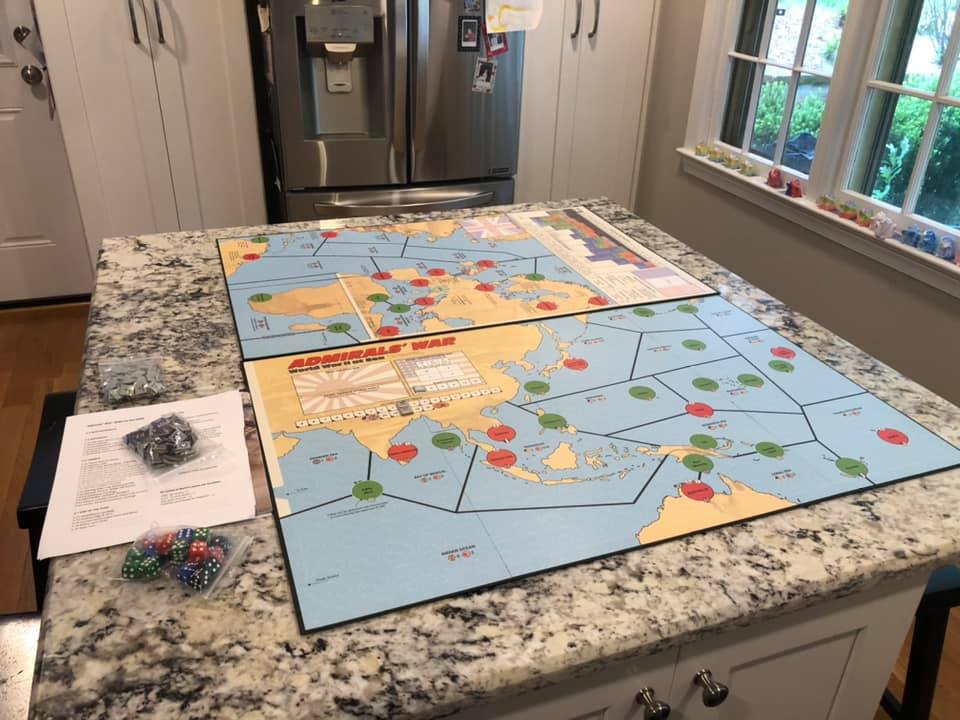
As with its predecessors the game has all of the major nations involved in WW2 represented and their fleets consist of all of the major ships from heavy cruisers to aircraft carriers. The game also has air forces, submarines and amphibious ground units, so players have a lot of forces to push around the map.

The key to the game is the control of zones on the map which are worth victory points for each faction in the game. During each turn, the players push out their forces to either keep or gain control over these zones. If both players push ships into a zone, they have to fight it out until only one side remains and the winner will gain VPs for that zone for that turn.

The combat and movement mechanics of the game are easy to understand, however some of the more nuanced rules (air vs land engagements, breaking off and pursuit, use of Subs) has us going back into the rulebook a few times as we started to play. This was not due to the game being complex, which it isn’t, but as all seasoned grognards we make the same mistakes as many others by reading too much into the rules.
A Rainy Sunday
A bunch of here in the DC region have been itching to wargame in person, and due to the fact that we all got vaccinated weeks before I decided to host our first game. My first challenge was finding a game that was for five players and not very difficult to learn and finish in an afternoon. I also wanted a game that was fun and from looking at my collection I felt that Admiral’s War would be the perfect game for us to play.
The gaming pod consisted of Doc “Sky Galleons” Wohlrab and Phillip Bolger from NDNG, Jeff aka Junior from the and Sebastian Bae from . We also wanted to use this meet up to say good-bye to Phil, who is shortly moving to Maxwell AFB to be a wargamer for the USAF’s Lemay Center.

In a multi-player game Admirals’ War has four main factions, Japan (Phil), Germany (Doc), USA (Sebastian) and the British Commonwealth. The game has many minor factions such as Italy which is controlled by the German player, the French (both free and Vichy) and the USSR.
Since we had me as the fifth player, I controlled the UK forces in the Pacific, the US in the Atlantic along with the Soviets and the Free French. The fifth swing player is not stated in the rules, however to make each theater to move along smoothly the addition came in very handy.
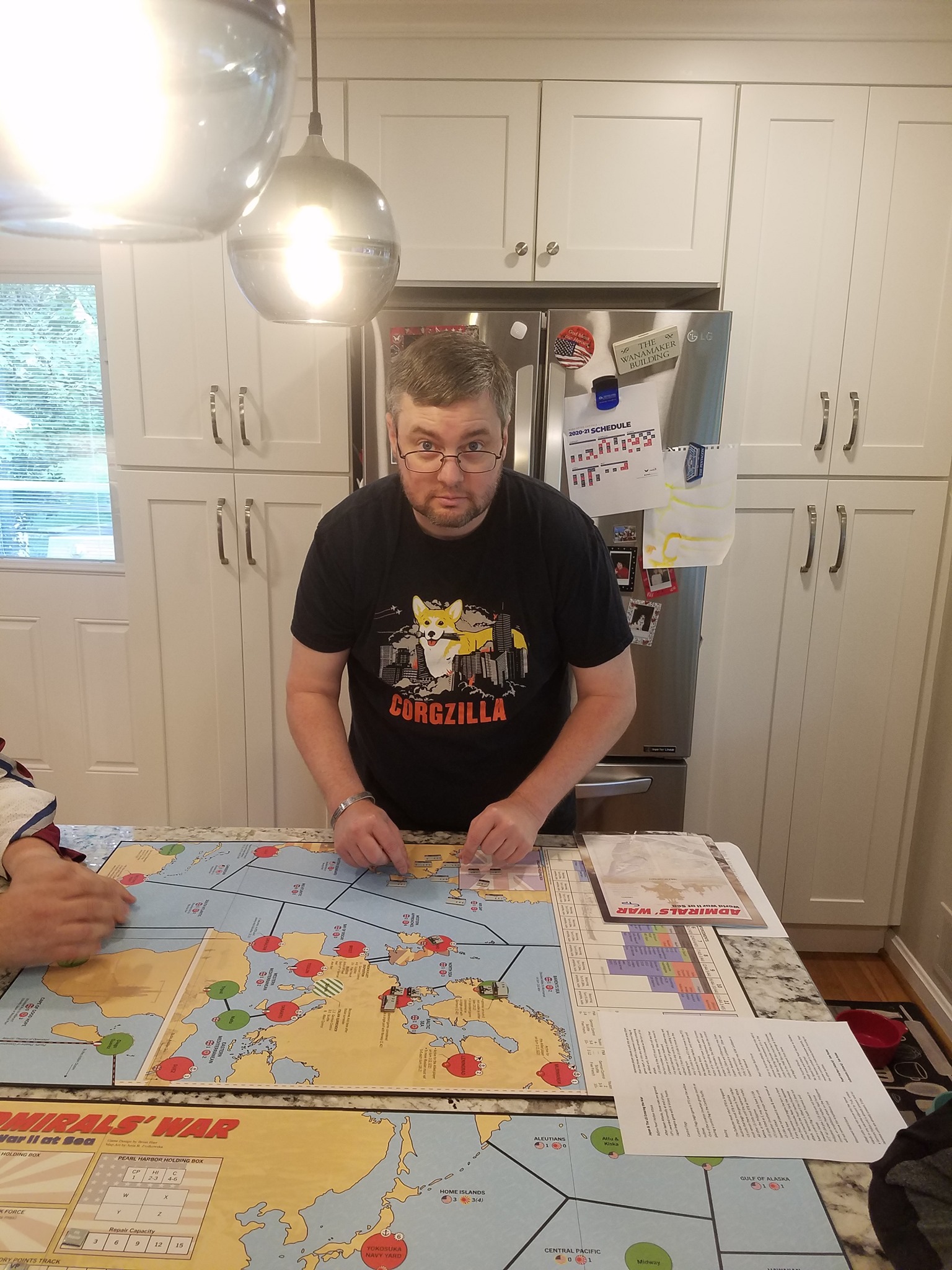
The game actually kicks off a few months into the war and focuses on the Atlantic theater only. We used the single theater focus to all learn the rules of the game together and soon found ourselves deep into the game. The strategy that Junior and I came up with was to knock Italy out of the war as soon as possible. To do this all we had to do is control both zones of the Mediterranean for two consecutive turns. This was easier said that done and up to the time we ended at the end of Turn Seven the Med was still an Italian lake.
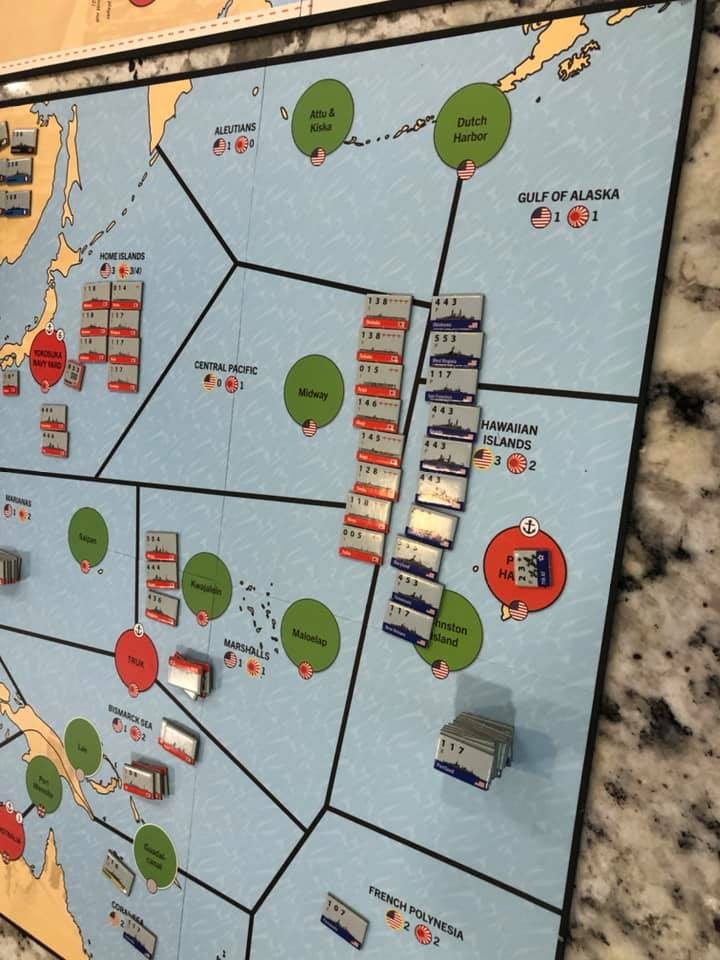
One “homebrew” audible we made was that during Turn Two, the French Fleet goes away and the players roll to see if the ships go Free French or Vichy which is played by the German player. We wanted to keep more of the French ships in the game and decided to roll off each ship with the high roller taking the ship and scuttling the ship on the case of a tie. The German’s did take the best French ship (Richelieu) and some cruisers with the Free French taking most of the fleet (we only had two ties). This was a stroke of luck because the Free French came in handy to ensure that the UK stayed alive in the game.
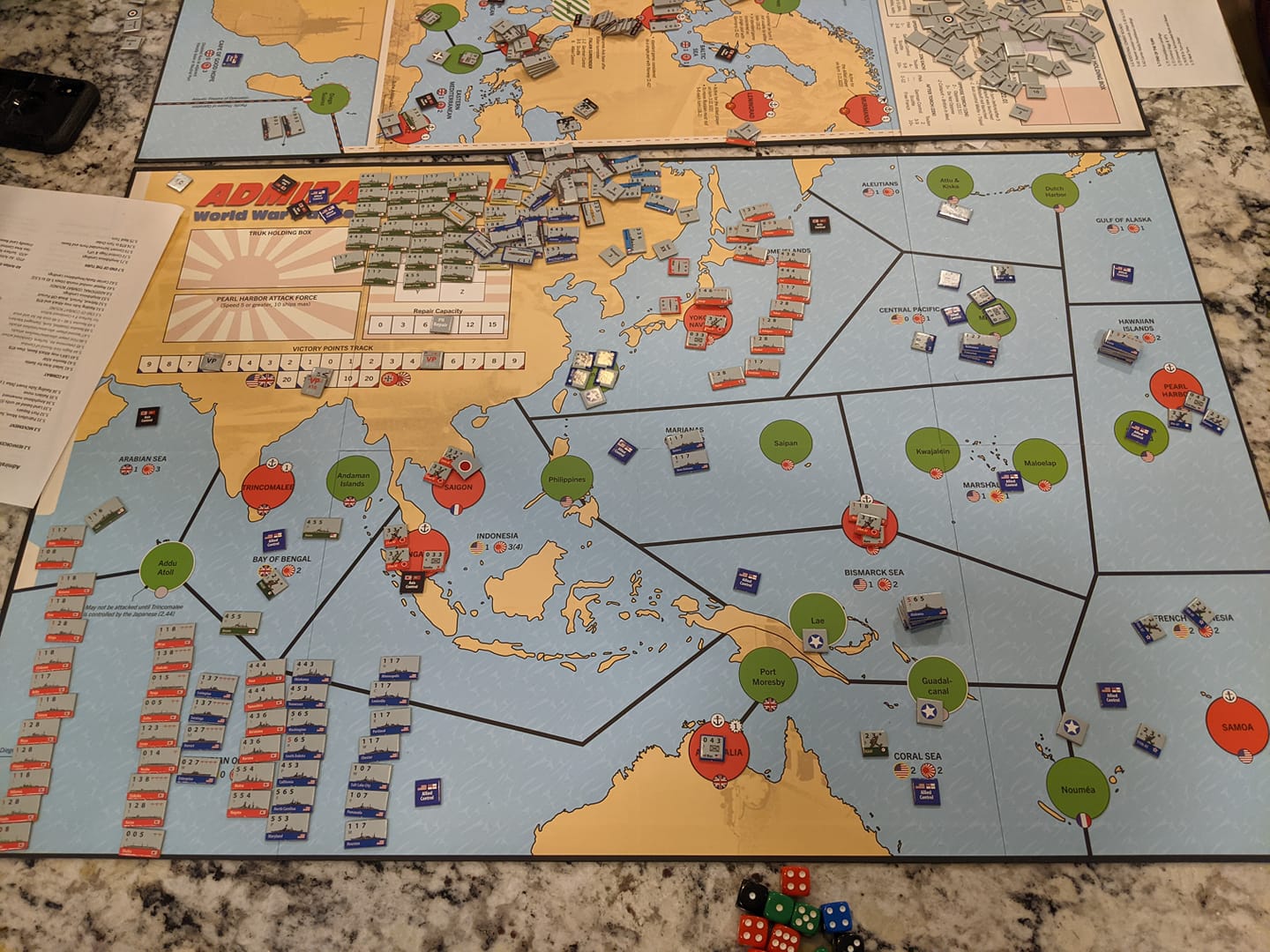
Doc who played the German’s was more of a Raeder than Donitz and did not leverage his U-Boats very much to grab VPs early in the game. While Germany cannot mass its surface fleet to capture a lot of zones, it can use its U-Boats to farm victory points thought the game. The opposite was true in the Med, the Italians can mass since they cannot easily leave, so the two zones flip flopped between the two sides each turn, neither side could get a strategic advantage.
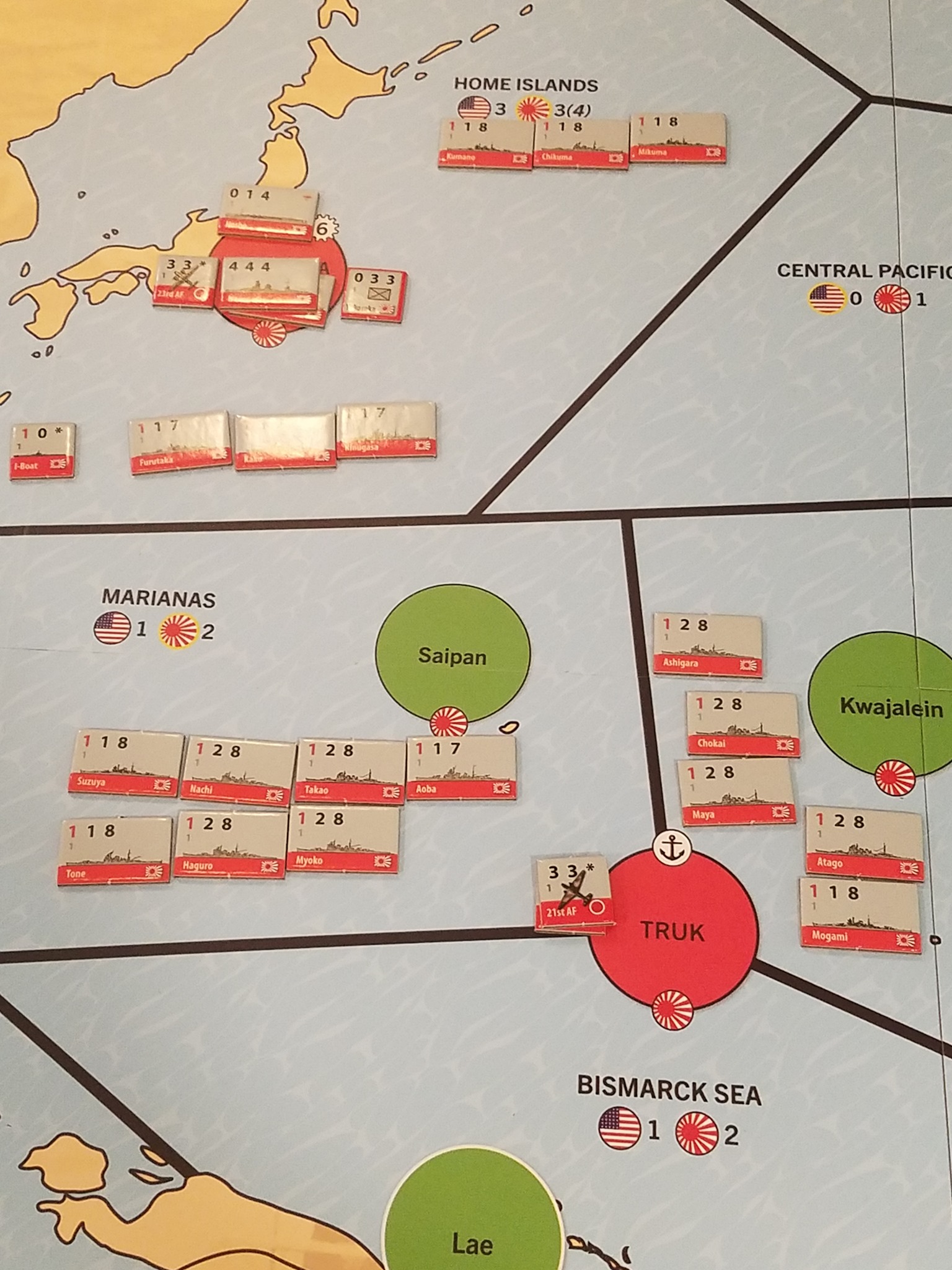
The British also have a problem when it comes to massing forces. In order to keep the zones of the ATO under their control they have to place a ship in each zone which prevents them from taking on the Axis in a fair fight. This brought up an observation that Junior made; how the game forces a major fight during each turn and we were having a Jutland type battle every 3-6 months which is not very historical. This makes the ATO way more “What-if” than the PTO, which adds to the playability and fun of the game.
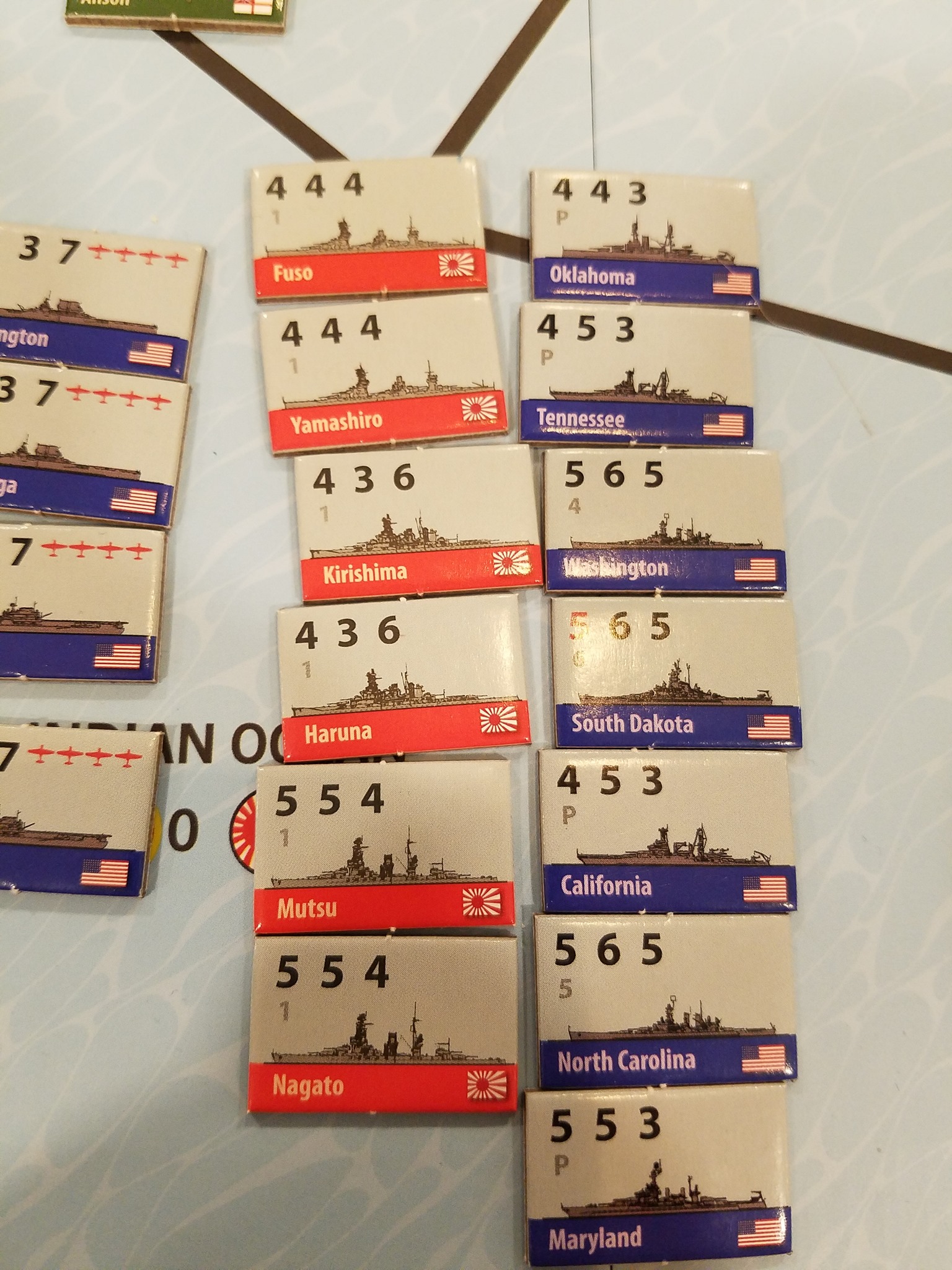
In the PTO things went very different. Phil decided to attack Pearl Harbor a turn early and did a little bit better than Yamamoto. In the following turn he went very historical by pushing his carriers into the Indian Ocean to knock the British off the PTO map and attacked to the south threatening Australia during his second turn. Sebastian decided to mass his fleet and went straight to the Japanese home islands and won a decisive victory against the IJN.
This caused Phil to push forces back to their home port which opened them up for US capture at a low cost. Going straight to the home islands earned Sebastian the title of “Ballsy Halsey” by the rest of the group. While this tactic worked in stopping the Japanese, but the cost was very high. The US lost a lot of battleships and almost all of their fleet carriers, however on Turn Eight the US gets a lot of help from the reinforcement schedule where the Japanese do not, so Sebastian’s tactic may have been a good one (we stopped after 6 hours at the end of Turn 7).
Four Sides, Four Different Experiences
One thing we all realized is that the two theaters play very differently and gives each of the four sides a unique experience. We stated above that the Atlantic played very ahistorical while the PTO play seemed to follow a lot of the historical script at first.
In the ATO the rules do allow the German player to focus in using U-Boats to win the war which is what they tried to do, however the game allows you to use your surface fleet more actively that the German leadership did, so it allows you to perhaps correct a strategic mistake they made during the war. In the PTO, the players have a “Midway” clash almost every turn until one side is weakened to the point where they become a spectator more than an active combatant.

As stated above the game is all about control of the seas so the Axis players have to build a lead early in the VPs and try to hold it as long as possible because once the Allies (especially the US) get their major reinforcements the clock is almost at midnight for the Japanese player.
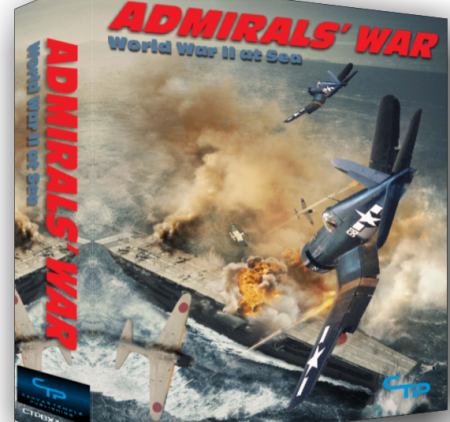 We played the game with both maps and four players, you can also play the game in a single theater and play the entire global war with only two players, I think the use of five players for both maps is a good way to go, it makes each turn shorter and more manageable for each faction. It also allows you for focus on a single theater and try to outsmart your opponents war plan.
We played the game with both maps and four players, you can also play the game in a single theater and play the entire global war with only two players, I think the use of five players for both maps is a good way to go, it makes each turn shorter and more manageable for each faction. It also allows you for focus on a single theater and try to outsmart your opponents war plan.
Impressions
Let me start off by stating that the five of us had a blast playing Admirals’ War for a whole afternoon. The game allowed us to do something we have not done in well over a year, meet up and play a game in person. We were able to grasp the rules quickly and get into the fun of the game in a short amount of time.
The game itself is amazing, the mounted maps are colorful and the ship counters are a perfect size and a big upgrade from previous versions of the game. Last year the game went into its second printing via Kickstarter, with an that adds the Black Sea and takes the game into 1946 with a lot of later historical and “what-if” ships being added to the counter mix. The expansion also adds rules for the play of the subs, which would be the only minor weakness of the first edition of the game.
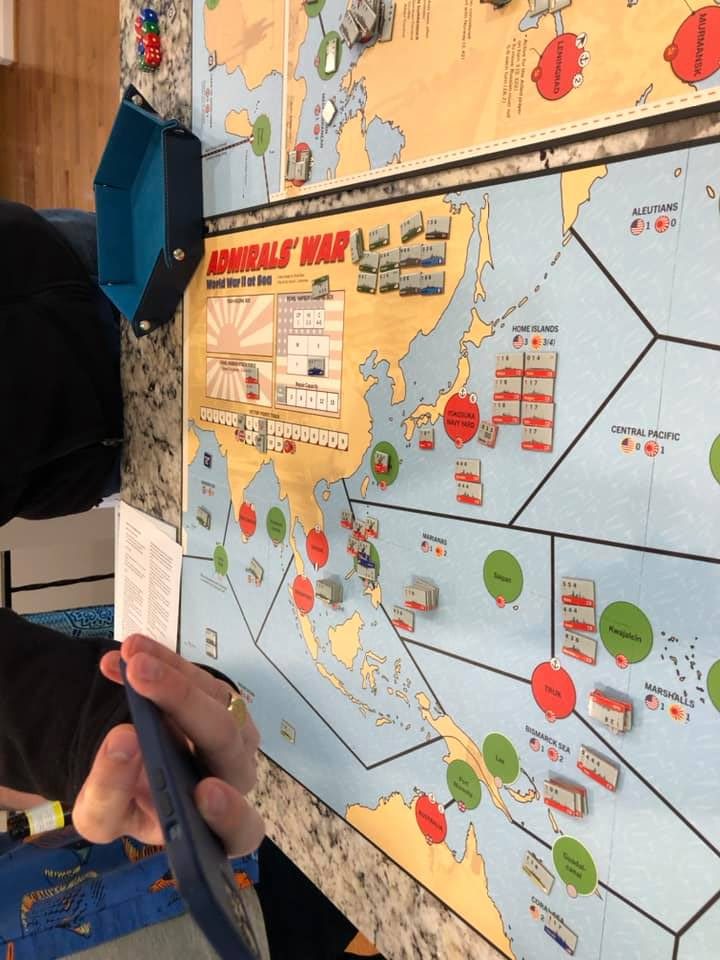
Every time I review a game, I get a lot of email or IMs on social media with the same question; “Do you think I will enjoy the game”, which is really impossible to answer. The best way to describe this game is ship and dice porn, because both are very abundant in Admirals’ War.
If you like games that are big in size and scope but are playable, if you like naval games and like having a lot of fun then this game is for you. If you are a rivet counting fan of simulations that wants a deep game that explores the intricacies of the strategy of WW2, then this game is not for you and good luck finding a game that meets your expectations.
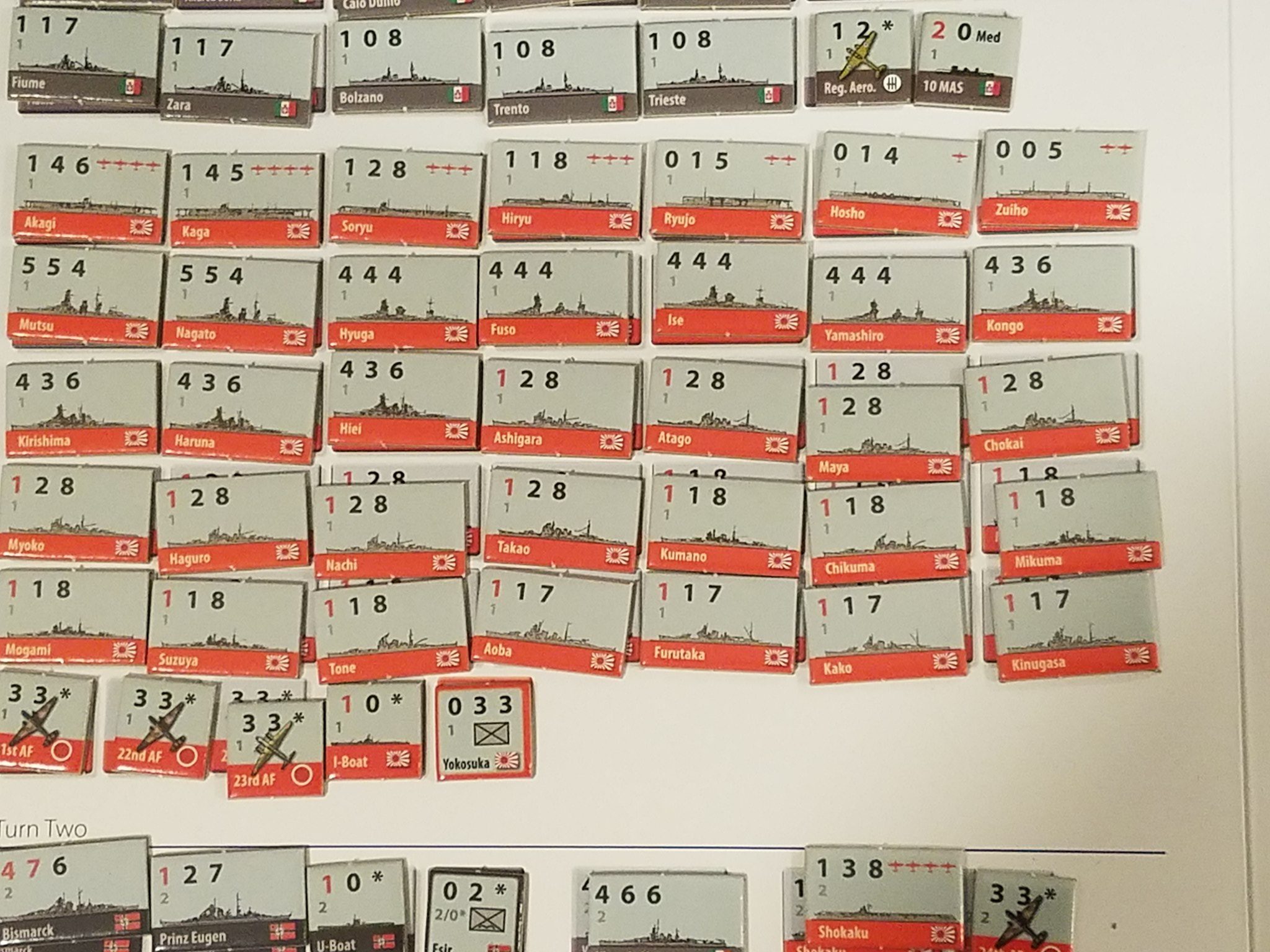
When we wrapped up playing, we all wanted another shot at playing Admirals’ War. We can use what we learned in our first play to better our experience and most of all have a lot of fun.
